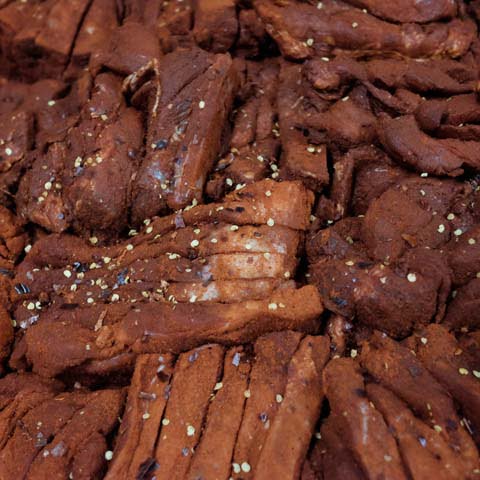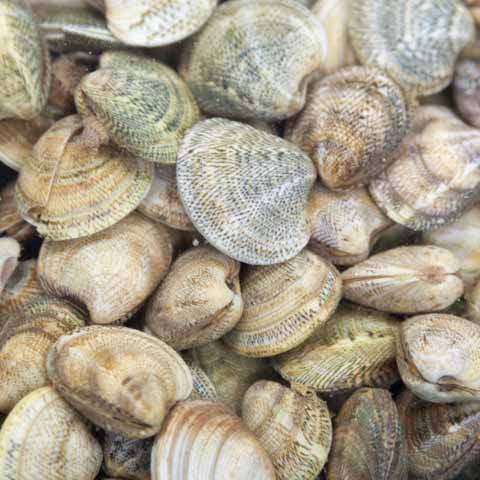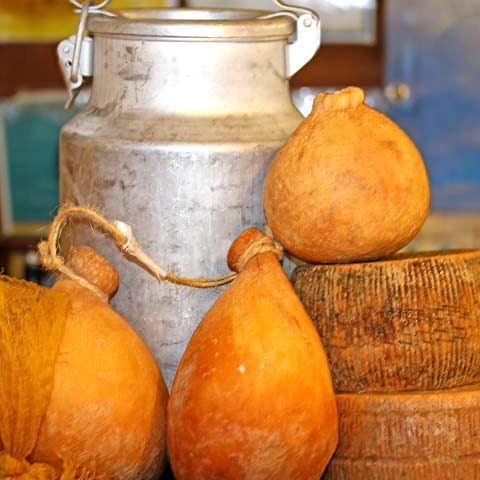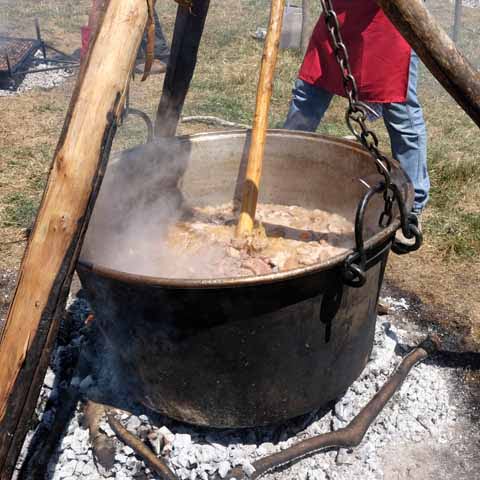Molise Culinary Food and Wine Travel Guide
The unassuming and peaceful region of Molise in south central Italy is a land of deep tradition for both its people and cuisine. The stretch of rolling green hills that is sandwiched between the craggy Apennine Mountains and the Mediterranean climate of the Adriatic Sea is ripe for agriculture, therefore many of its crops are an integral part of local fare.
Locally grown fruits and vegetables are a staple for the people of Molise. Tortalalli is a popular fruit that closely resembles a cucumber in shape and color. It is eaten with the skin on as a topping in salads that may also include a locally grown endive called centofoglie or scarola venafrana. A time honored vegetable grown in the area is the Isernian onion, sometimes called cipolla di San Pietro. The onion is small and white in appearance and sweet in taste. It is often enjoyed raw or paired with a slice of homemade bread.
The fertile land of Molise is also home to olive tree groves. Locally grown olives are used in the mass production of extra virgin olive oil. The oil is often used to preserve foods and give flavor to bread and various other dishes.
Truffles are big business here. In fact, Molise is the second biggest producer of truffles in all of Italy.
The truffles flourish in heavily wooded areas and typically grow around the base of the trees. Nero Preggiato and Bianco truffle varieties are considered to be two of the best in the area and usually grow between the months of October and February. Other truffle varieties such as Scorzone and Bianchetto, grow at other varying times throughout the year. While truffles are used in a number of different ways
in Molise cuisine, one of the most popular is to use truffle shavings as a secret ingredient for pasta sauces.
Other key components of Molise fare include salami, cheese, and Composta Molisana. A wide variety of salami is made locally and is diverse in both spicing and aging methods. The area is known for more than half a dozen different varieties of locally made cheeses that are usually enjoyed alone or as a complement to a first or second course. Composta Molisana is a vegetable and fruit jam of sorts that is usually made with onions, peppers, tomatoes, grapes, and pears. The jam is so prevalent and favorited in the area that it has its own festival.
Appetizer
Dining is a leisurely experience in Molise and generally begins with appetizers such as cheese, salami, bread, or possibly a combination of the three.
Caciocavallo di Agnone is a locally made cheese easily recognizable for its unique pear shape. The cheese is made with one hundred percent raw cow’s milk and is generally aged up to a couple of years.
The more the cheese ages, the spicier the flavor can become. Locals usually enjoy this cheese grilled and with bread.
Formaggio di Pietracatella is another locally made cheese in Pietracatella in Campobasso. A mixture of goat, sheep, and cow’s milk comes together to form this soft white cheese with a crinkled yellow rind.
This particular cheese is aged to perfection in a mogie, or tufa cave, typical of this area. Formaggio di Pietracatella is often eaten raw or sometimes paired with pickled vegetables.
Also from Campobasso is Caprino di Montefalcone nel Sannio, a cheese made from raw goat’s milk. The cheese is uniquely aged by hanging from the ceiling for two months via a special tool called a cascara.
The cheese is then moved outside to age in the open air for an additional two months. It is usually enjoyed fresh or sometimes smeared on a piece of homemade bread or served with locally made jams.
Guanciale, also known as vrucculare or pork cheek, is a triangular shaped meat. It is seasoned generously with various spices including garlic and chili pepper and then it is hung on a wooden pole to dry. The closed room in which it dries utilizes a fireplace that continuously burns oak wood for around thirty days before the meat is aged outside in open air for almost twice as long. The meat can be served warm with a slice of homemade bread or added to pasta sauces, stuffed pasta, or even stew for added flavor.
First Course
Pasta is a must for any Italian dinner table, and Molise is home to several well-known varieties of pasta, some with their origins here.
Cavatelli is a flat pillow shaped pasta made from durum wheat semolina and water. On occasion, locals will add boiled potatoes to the pasta. It is typically served with a meat or ragu sauce, however, locals prefer to use it in what they call spigatelli, cavatelli served with vegetables such as mushrooms or broccoli.
The fusilli pasta shape is thought to have originated in Molise. The corkscrew pasta shape is made by wrapping the pasta around a wire and letting it dry. Fusilli alla Molisana is fusilli pasta made of durum wheat flour, salt, and water and is generally served with a meat sauce of lamb, veal, sheep, or pork sausage.
Maccheroni Crioli is a locally made noodle whose name is said to come from the type of laces local shepherds historically fastened their shoes with. As with most other pastas, it is typically served with a pork or sheep meat ragu sauce. However, at Christmas, this dish is often served with walnuts and baccala.
Second Course
Pezzata is one of the more popular second course dishes of Molise and is a nod to its people’s slow, deliberate way of life that translates to the way they prepare and cook food. Pezzata very much resembles a stew and is a combination of boiled mutton, potatoes, various vegetables, and spices. The secret is in the preparation as the dish is cooked in a traditional copper container for hours to allow for the blending of flavors and tenderizing of the meat.
Baccala Arracanato is a favorite seafood dish of the area that is prepared in a very distinct way that is credited with the overall success of this second course. Cod fish seasoned with bread crumbs, walnuts, raisins, olives, pine nuts, and cherry tomatoes is cooked in a pan inside a fireplace and is covered with ashes. Many have tried to duplicate this dish by cooking it in the oven, but have felt it fell short of the taste obtained from cooking it traditionally in the fireplace.
Street Foods
While Pampanella is originally from the village of San Martino in Molise and can still be found there, it can also be found throughout the region. Pampanella is a marinated pork spiced with sweet or spicy peppers, salt, vinegar, and garlic. The meat is wrapped in a vine leaf before being cooked in an oven.
This savory treat is easily enjoyed while sightseeing.
Dessert
When it comes to sweet treats, Scarpelle is a holiday favorite. It is made from a leavened batter that is then fried and sprinkled generously with sugar while still warm. The dough is made into a unique twist somewhat resembling a large, soft pretzel that is considered a tradition of craftsmanship locally.
Cauciuni is a pasta based dessert. Raviolis are filled with a mixture of chickpeas, cocoa, spices such as cinnamon and cloves, liqueur, and candied fruit. After the raviolis are fried, they are drizzled with a lavish serving of sweet honey.
Other locally popular sweets include ostie farcite, peccellate, cippillati, and mostarda d’uva. Ostie farcite is a cookie-like treat made by sandwiching a filling of walnuts, almonds, and honey between two thin wafers. Peccellate is a pastry filled with grape syrup or jam like mostarda d’uva, a jam made with grapes grown in Molise. Cippillati is a crescent shaped pastry usually filled with sour black cherries and jam.
Molise Wines
The rolling green hills in between the Apennine Mountains and Molise’s coast are perfectly suited for grape growing and wine production. While the region has historically grown wine for mostly local consumption, that is starting to change as Molise seeks to put their wines on an international stage.
Biferno is one of the most popular wines in Molise that is named after the largest river in the region.
These wines can be red, white, or rose. Biferno white wines are typically made with Trebbiano grapes and some Bombino, but the red wines are a blend of the Montepulciano and Aglianico grapes.
Pentro di Isernia wines can also be red, white, or rose. These white wines are very similar to the Biferno blend, but the red wines are instead a blend of the Montepulciano and Sangiovese grapes.
Molise wine is made from a combination of local and international grapes and is a favorite of locals.
Steal away to the comfort and tranquility of Molise to slow the pace of life and enjoy every moment.
Gather friends and family around the table for impeccable food, joyous laughter, and the divine taste of locally produced wines.
Travel Guides
About Molise
Cities of Molise




